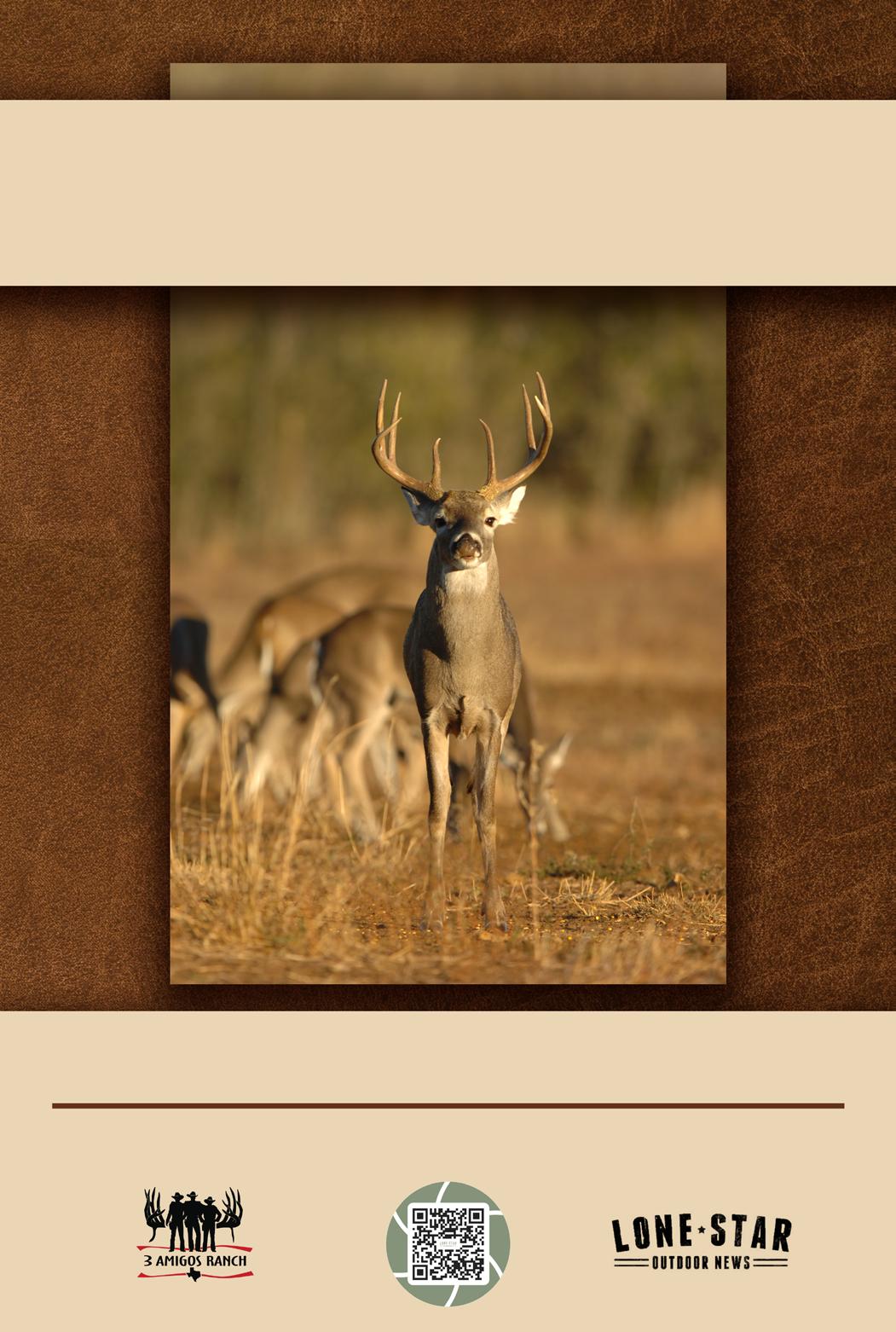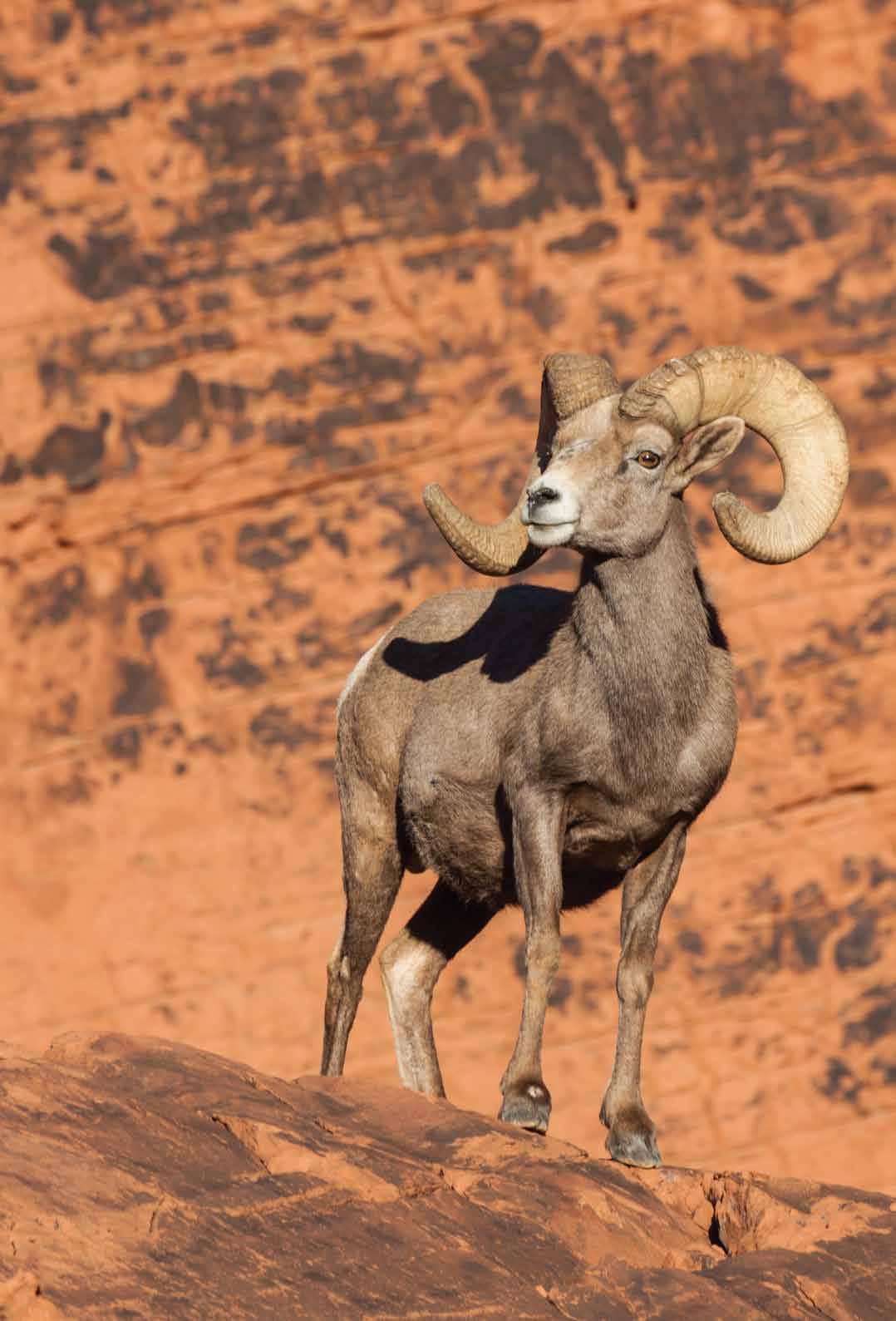




By Nate Skinner For Lone Star outdoor newS
Capt. Glenn Ging said the speckled trout bite has been fairly steady in East Matagorda Bay while drift-fishing along the edges of mid-bay reefs in stretches with 5-6 feet of water.
“Most of the trout have been in the
It’s been a rather warm start to the fall season along the Texas coast, with the arrival of cold fronts having been few and far between. Water temperatures have just recently started to dip but fall fishing patterns are slowly gaining momentum.

Lone Star outdoor newS
If the success of Texas waterfowl hunters who travel north is any indication, hunters, especially snow goose hunters, could have a good season when the birds arrive.
Texas Parks and Wildlife Department biologists indicated that the May duck population survey yielded
positive results for the first time in years.
The U.S. Fish and Wildlife Service May Waterfowl Breeding Population and Habitat Survey revealed the total number of ducks increased 5 percent from the previous year and multiple key species showed notable gains. Mallards were up 8 percent, American wigeon 55 percent, green-winged
18-20 inch range, with a few larger ones mixed in, and they have been holding tight to the bottom,” Ging said.
“Light-colored soft plastics rigged on a 1/4-ounce jig head have been producing the most strikes.” The fish have not been concentrated in one area, and Ging has been making long drifts to consistently catch
By Nate Skinner Lone Star outdoor newS
The definition of a trophy buck is different for every hunter. There are a ton of impressive deer across the state, and some might argue that 8-point main frame bucks don’t get the attention they deserve, as many folks are in pursuit of a deer sporting more tines.
However, there is still a population of deer hunters that truly appreciate a large, mature buck. Hunter Hortenstine is one of those and recently his goal of harvesting one came true when he was able to get a shot at a 7-year-old buck on his family’s low fence ranch in Shackelford County. The deer scored a little more than 150 inches, which many consider the pinnacle of a nice buck in Texas.
“This deer was extremely special to me,” Hortenstine said. “A 150-class 8-pointer just doesn’t come around often.”
Hortenstine was hunting from a rifle blind with his longtime buddy, Lane Reed, when he first encountered the buck. His family’s ranch is a part of the Managed Lands Deer Program, which allows deer on the property to be harvested by any legal means, starting with the opening day of archery season.
“The first evening I hunted for him, I went with the goal of just laying eyes on him,” Hortenstine said. “I took a bunch of pictures of him and really studied him to make sure I had his age right. By the
teal 20 percent and scaup 16 percent. Conditions in the breeding grounds also improved significantly due to consistent rainfall in June and July.
“As a result of these factors, we anticipate the best duck production in many years,” said Kevin Kraai, waterfowl program leader. “Hunting success typically improves when there are plentiful




WHATEVER YOUR ADVENTURE IS, WE'VE GOT YOU COVERED.





By Craig Nyhus Lone Star outdoor newS
It was a reunion of sorts in Pierre, South Dakota. Bob Tinker, the for mer owner of the famous Tinker Kennels, invited some friends and former customers for some great er prairie chicken, sharp-tailed grouse and even a little pheasant hunting.
Lone Star Outdoor News’ David J. Sams had been there before, more than once. Taking photographs for Field & Stream magazine more than two decades ago of the opera tor who took his hunters by horse back to ride behind his fast-mov ing setters, Sams’ photo of Tinker made the cover of the at-the-time giant magazine.
Several years ago, Sams was reminiscing about the horseback hunts with LSON’s Craig Nyhus, mentioning Tinker Kennels sever al times. When he referred to the owner Bob, it raised a question.
Nyhus asked, “Is his name Bob Tinker?” Nyhus asked.
When Sams responded yes, Ny hus came to a realization.
“I went to college with him (at North Dakota’s Jamestown Col lege, now called the University of Jamestown),” Nyhus said. “He was a star hurdler on the track team.”
When the invitation from Tin ker came, it included both of the LSON crew.
The hunt focused mainly on prairie chickens, a bird Nyhus had not taken in his long bird-hunting career.
Hunting the elusive chickens is no picnic. Walking the endless prairie south of Pierre, called the Fort Pierre National Grasslands that spans nearly 116,000 acres, the birds could be anywhere.
“They fly so far, they can be in
Please turn to page 22

After 28 years of collaboration on worldwide conservation initiatives, Dallas Safari Club and Conservation Force have officially joined forces to form one of the most impactful conservation partnerships in the world.
CF is a 501(c)(3) foundation devoted to sportsmen and women being a force for conservation. The purpose of CF is to expand and secure conservation of wildlife, wild places, and our outdoor way of life.
DSC’s mission is to ensure the conservation of wildlife through public engagement, education and advocacy for well-regulated hunting and sustainable use. A member of International Union for Conservation of Nature, DSC is a mission-focused conservation organization, funded by hunters from around the world.
DSC has been Conservation Force’s single greatest supporter in recent years. This has included hundreds of thousands of dollars in direct funding and co-funding of joint projects. Under this new agreement, the joint project capacity of both organizations will be greater. This partnership sets a promising stage for future collaboration and demonstrates a willingness to devote increasing resources to growing conservation needs.
The agreement formalizes and builds on mutual successes of the past. It follows on the heels of the successful elephant workshops, CITES CoP 19, and the jointly funded regional (11 country) hippo workshop and implementing drone surveys.
“DSC is widely recognized as an exemplary organization that gives back and is forward looking,” said John Jackson III. “The formal agreement with DSC is a monumental achievement with benefits for all.”
“DSC has been, and continues to be, a leader in worldwide, hunter-funded wildlife conservation,” said Ray Mulholland, DSC president. “By formalizing our partnership with Conservation Force, it positions both organizations to greatly increase their conservation reach and influence around the globe. The real winner will be wildlife that benefit from sound, science-based, hunter-led conservation efforts.”
By Nate Skinner
Alex Meadows recently harvested a mature bull elk in Jeff Davis County near Valentine while on a hunt with High West Outfitters, courtesy of his friend, Brian Austin, who was pursuing pronghorn in the area. The bull scored in the 340-inch range.
Meadows and his guide, Josh Coffey, heard the bull bugling off in the distance, and were able to successfully make a move and stalk within shooting range.
“We set up on a hill at sunrise to glass and listen, and really didn’t hear or see much of anything,” Meadows said. “Coffey started bugling a little, and we finally heard a bull bugle in response. So, we started easing that direction.”
Coffey and Meadows moved up to the edge of a hilltop and put eyes on the bull through a spotting scope. He was well out of shooting range and
working a herd of cows.
“After watching him for a while, we decided we were going to go after him, and came up with a plan to make our move,” Meadows said. “We were able to loop around him on some ranch roads with the truck, and stopped at a low spot that we thought would still be a fairly significant distance away from him. I was getting my gear together when Coffey, who was standing in the bed of the truck and glassing, told me to hurry up and grab my rifle.”
Meadows climbed into the bed of the truck with Coffey, and they could see a couple of cows just past the elevated brush line in front of them. The herd of elk had apparently covered a lot more ground than they had expected in the time it took them to move. Meadows got his rifle set up on a tripod and began to scan the scene before seeing the elk through his scope.
“The two cows that we could see

By Tony Vindell For Lone Star outdoor newS
As deer hunting season approaches, one of the four tracts under the Lower Rio Grande Valley National Wildlife Refuge is going through an improvement project to make access easier.
It’s called El Teniente, a 4,000acre tract located in western Willacy County and along Texas Highway 186. A strip of land on the left side of County Road 10 is in Hidalgo County.
The project called for fixing two of its longtime neglected roadways CR 20 and 30, each of

Safari Club International has a new parent corporation, albeit with the same initials. On Oct. 8, Safari Club International launched Sporting Conservation International, an inclusive, forward-thinking parent corporation it asserts will protect and advance the conservation of wildlife and wild places by unifying conservation’s most active and passionate stakeholders — hunters, anglers, wildlife scientists, and the men and women around the world who make up the outdoor sporting community — under one roof.
Safari Club International’s Annual Hunters’ Convention and Ultimate Sportsmen’s Market will remain under the direct control of Safari Club International and will
be unchanged by the creation of Sporting Conservation International. Also, Sporting Conservation International will not change Safari Club International’s relationship with its local chapters and members. They will still be part of Safari Club International and enjoy the same autonomy in operations as in the past. The existing Safari Club International infrastructure and its long-held traditions will remain unchanged.
SCI said as threats against science-backed conservation and the right to hunt and fish become more severe and global than ever before, Sporting Conservation International will allow affiliate organizations aligned with this critical mission to coalesce under a single corporate entity.




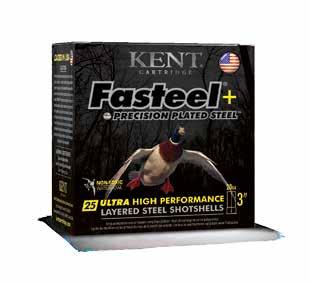








Heckler & Koch introduced the CC9, an all-new micro-compact, striker-fired, pistol chambered in 9mm that sets a new standard in the world of micro-compact pistols. Its sleek design is complemented by exceptional attention to detail, ensuring that every element functions seamlessly. Designed and produced in the U.S., the CC9’s accuracy and performance excel on the range or in a defensive scenario, making it an excellent choice for shooters of all skill levels.

Engineered with HK’s signature precision and rigorous testing, the CC9 is held to the same standards as full-size duty pistols and tested to the NATO Army Armaments Group AC/225 standards. The CC9 was subjected to a battery of tests, including extreme temperatures, dust, sand, mud and being dropped, to simulate real world conditions. Built to HKs’ renowned durability standards, the CC9 had over 750,000 rounds fired during development and testing.
Designed for shootability top-to-bottom, the CC9 handles like a full-size pistol and delivers exceptional accuracy and control while being built on a full +P rated chassis system. With a full 4-finger grip and the same length of pull as the full-sized VP9, the CC9 stays on target when it matters most. Its advanced trigger system ensures smooth, consistent pulls, while the enhanced recoil management allows for rapid, accurate follow-up shots. The CC9 comes optics ready, features a tritium front sight, and a blacked out, serrated rear sight for quick target acquisition, ensuring users can respond effectively in high-stress situations.
As the smallest double-stack pistol HK has ever produced, the CC9 sets a new standard for concealed carry firearms. Chambered in 9mm, the CC9 comes equipped with a 10-round and 12-round magazine for flexibility in concealment.
The CC9 is equipped with a robust array of safety features, including a trigger safety, passive firing pin safety, Out-of-Battery safety and Safe Take Down Feature for safe disassembly — no need to pull the trigger during field-stripping. Additionally, the CC9 includes a visual and tactile loaded chamber indicator built-in to the extractor.
The CC9 is compatible with a wide range of accessories, including lights and lasers, with its integrated Picatinny-style accessory rail.
The first micro-compact pistol that meet’s HK’s rigorous standards is shipping now.
Park Cities Quail Coalition distributed 49 Quail Safe feeders that were donated to landowners impacted by the Smokehouse Creek fire complex this spring.
When the fires raged across the Panhandle, we watched helplessly as 1,000,000 acres of habitat were destroyed in a matter of days, PCQC posted. While the ranchers were worried about their livestock, fencing, and hay supplies, we wanted to devise a plan to help their surviving quail populations.
With the backing of Tito‘s Handmade Vodka, Lapetco and Quail Safe, an application process was developed for landowners to request feeders and medicated feed for their properties. The response was overwhelming, PCQC said.
Executive Director Jay Stine was on hand to meet with many of the landowners and member Craig Cowden provided a pickup point at his ranch.
Joshua Creek Ranch was named one of 10 outfitters across the country that qualify as a Federal Select Outfitter, a program that evaluates the hunts, habitat, shooting programs, lodging and cuisine.
Also, each year as part of the program, outfitters are asked to submit nominations for Top Guide and Top Dog.
“We want to honor your top guides and dogs at each lodge,” Federal Premium Ammuntion said. “We know how much you value them and that they are an integral part of the experience that you offer.”
This was a challenging task given that all of our guides and dogs are outstanding,” said JCR’s Managing Director Kevin Wellborn.


Wellborn said JCR considered the quantity and quality of hunter reviews, a peer vote among the guide team and JCR Owner/Management vote.
Based on these variables, JCR’s 20232024 Top Guide is Chris Rossi, and the Top Dog is Chunk.
Each received a commemorative plaque from Federal that will be displayed in JCR’s Cypress Lodge.

Remember when a hunter was measured by how well he shot, and not how much he spent? When memories were measured in curly tails, not dollar bills? We do. And that is why we created the Spandau S2. A reliable, extremely well balanced waterfowl gun built around the Inertia operating system for unmatched performance at a price that shows that you still know the true measure of a hunter.
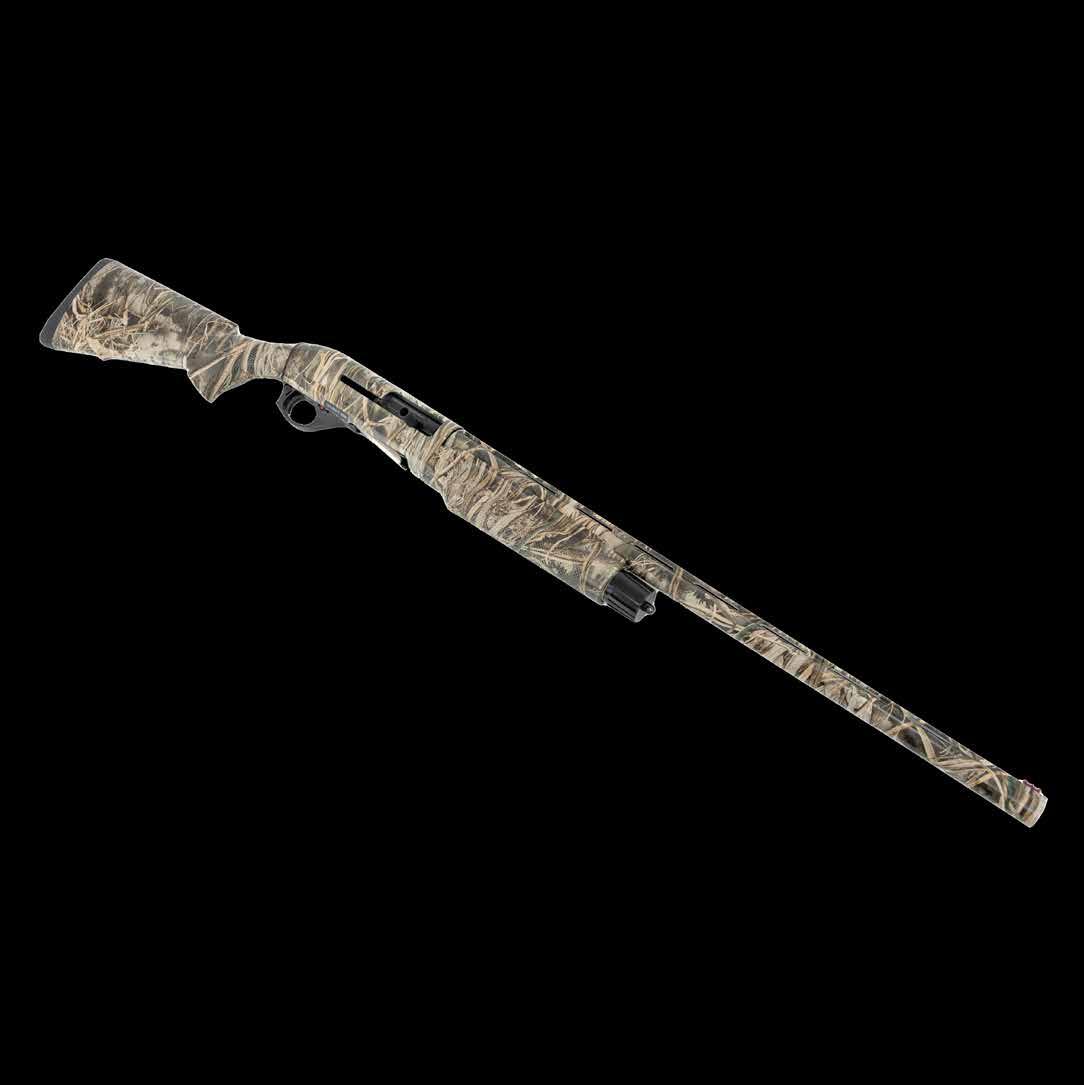


Crappie, sandies concentrated
By Nate Skinner
For Lone Star outdoor newS
The water level at Choke Canyon Reservoir is currently at an all-time record low. At more than 31 feet below conservation pool, the lake is only 18.4-percent full and dropping, seemingly by the day. Although this has produced many concerns for anglers and biologists alike, the low water levels have caused schools of crappie and white bass to become more concentrated.
Owner of C&C Guide Service Clendon Taylor said he plans to continue to fish Choke until he’s no longer able to launch his boat.
“The Calliham Unit boat ramp at Choke Canyon State Park is the only available boat ramp that is open and usable,” Taylor said. “There are buoys marking the end of the ramp next to the docks, and they are not very far from the water’s edge. It’s becoming dangerously more difficult to launch a boat.”

By Cory Byrnes one Star outdoor newS
Fishing for hybrid striped bass is picking up in lakes to the north as October cool fronts dip water temperatures, with the early anglers having the best results.
On Lake Tawakoni, guide Keith Parks said the hybrids are shallower early.
“Early in the morning we are finding them in 6 to 8 feet of water,” he said. “Once the sun is out, they suspend at about 15 feet.”
Live shad in the 2-5-foot range has been the bait of choice.
“Find a school and drop in on them,” Parks said. “The hardest part is keeping the bait alive with all the catfish.”

While searching for a school, Parks has been trolling a hookless deep-diving crankbait with a sassy shad tied to it. When a school is found, white bass are a part of the class.
“You’ll have to cull through them if you’re solely focused on hybrids,” he said. “Stay after it — some days are slower. Once you find them eating you can limit out pretty quick.”
The fishing has been excellent after water temperatures dropped 5 degrees on Cedar Creek Reservoir, according to guide Brent Herbeck.
“We have been having 15to 30-fish days,” he said. Inline spinners, slabs and umbrella rigs in bright colors have been productive.
“Fish them right off the bottom with a slow retrieve,” Herbeck said. “The fish are spread out, so if you’re not finding them, keep moving. They have been consistent — once you find them you can go back to the area, and they
Please turn to page 24

Austin’s Decker Lake, now called Lake Walter E. Long, saw its boat ramps officially close Oct. 16, leaving the lake inaccessible for boaters.
The 1,200-acre lake, located just east of the city, has been dealing with lowering water levels as part of a project by Austin Energy, which manages the lake along with the Austin Parks and Recreation Department to upgrade the lake’s nearly 60-year-old infrastructure. The work, including upgrading Decker Dam on the lake, is expected to begin in the spring of 2025 and continue into 2027.
While boat ramps will be closed for the duration of the project, the lake will remain available for shore-launched canoes and kayaks, and other park amenities will remain open, according to Austin Energy.
“Sad to see, this was one of the last local lakes that was fishermen friendly,” Charles Montgomery posted on social media.”
Many people, including fishermen, showed up to voice their opposition to a permit that the Port of Corpus Christi needs for its desalination plant.
The meeting at the Port Aransas Civic Center was open to everyone. It allowed citizens to provide input to the Texas Com
mission on Environmental Quality.
Officials in Corpus Christi, picked Kiewit Infrastructure South Co. to design and build the city’s planned Inner Harbor Desalination Plant. Local leaders estimate the project’s cost at $757.6 million.
The seawater desalination plant would have a capacity of 30 million gallons per day. Officials with the city-owned
Continued from page 9
numbers of trout.
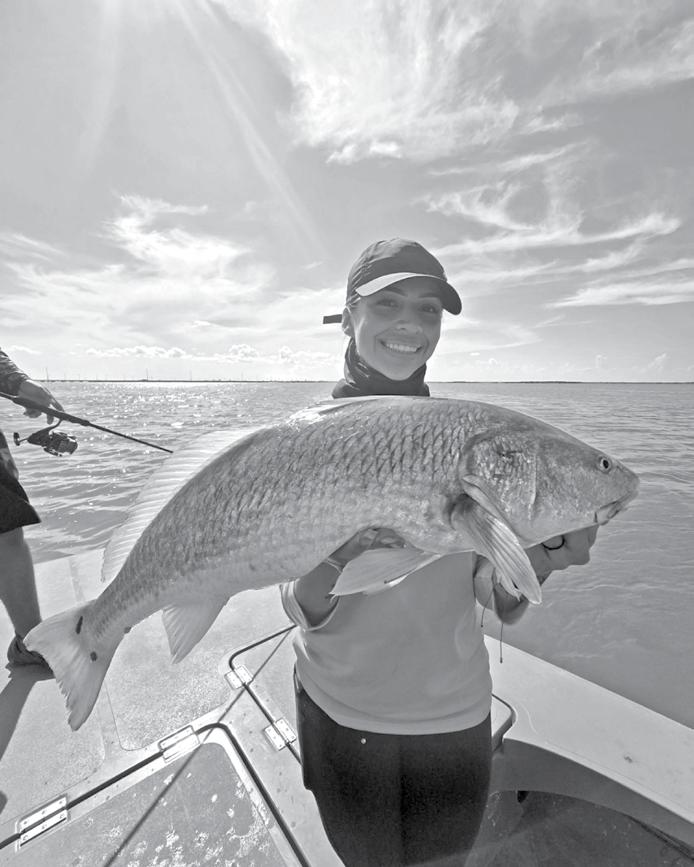
shell and the main portions of well-known reefs,” he explained. “There seems to be more fish along the edges of reefs and areas with scattered shell.”
Ging’s anglers have also been catching some redfish over mid-bay areas with scattered shell.
“More and more birds are beginning to work over schools of trout across East Matagorda,” Ging said. “Most of these fish have been pretty small. You can catch some keeper-sized fish working the birds, but you really have to go through a ton of small ones to find the larger ones.”
In Port Aransas, Capt. Cory Russell, said typical autumn patterns finally kicked off along the Coastal Bend after the passage of the last cold front. Redfish are beginning to school up and speckled trout are becoming more aggressive.
“The reds have really become easier to pattern recently as tide levels have started to drop a little bit,” Russell said. “They have been hanging out in about 1.5 to 2 feet of water, and most have been in the 20- to 25-inch range. We have also been coming across schools of bull reds, and these schools have been more consistent as water temperatures have slowly decreased.”
Most of the trout have been in the 15-18


inch range and holding in 3-4 feet of water. Both redfish and trout have been willing to strike a variety of rat tail or straight tail soft plastics.
“The fish have started to pull off of sand and grass flats, and we are catching more over the edges of mud and shell,” Russell said.
Kayak guide Capt. Filip Spencer said top-water lures and soft plastics have been catching good numbers of speckled trout and redfish in the Corpus Christi area. He’s been seeing some flounder randomly mixed in as well.

“Grass flats with sand pockets and slight ditches or depth changes in anywhere from 1.5 to 3 feet of water have been holding plenty of fish,” Spencer said. “Speckled trout have been scattered throughout these flats, and more and more schools of redfish have been starting to show up.”
During an outgoing tide, Spencer said that flounder have been feeding along the edges of sand pockets and dropoffs.
“The flounder aren’t just everywhere, but we are catching more and more of them each trip,” he said.
Most of the redfish Spencer’s anglers have been catching have been in the upper slot range, while the trout have been keepersized up to 27 inches.


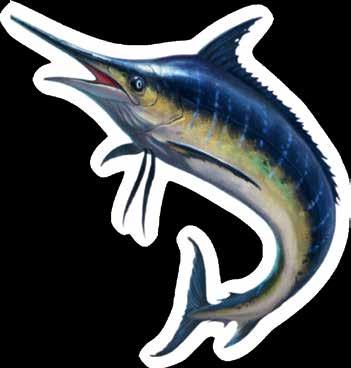

ALAN HENRY: Water clear; 75 degrees; 0.24’ high. Crappie are fair on jigs and minnows.
AMISTAD: Water lightly stained; 86 degrees; 65.56’ low. Largemouth bass are fair on shaky heads, crankbaits, flukes, and suspending stick baits. White bass are good on spoons, grubs, and small underspins. Stripers are fair on bucktail jigs and large flutter spoons.
ARLINGTON: Water stained; 85 degrees; 6.21’ low. Largemouth bass are fair on crankbaits and creature baits.
ARROWHEAD: Water lightly stained; 77 degrees; 6.28’ low. Catfish are good on fresh cut shad.
ATHENS: Water lightly stained; 81 degrees; 0.73’ low. Largemouth bass are slow. Crappie are fair on jigs.
AUSTIN: Water stained; 72 degrees; 0.75’ low. Largemouth bass are good on creature baits and craws.
B A STEINHAGEN: Water stained; 85 degrees; 0.06’ low. Largemouth bass are fair on soft plastics, frogs and top-waters. Crappie are fair on jigs. Catfish are fair on juglines.
BASTROP: Water stained; 90 degrees. Largemouth bass are fair on swimbaits, crankbaits and clear top-waters.
BELTON: Water stained; 81 degrees; 1.62’ low. White bass and hybrid striped bass are good on top-waters, slabs and jigs. Catfish are good on fresh cut shad.
BENBROOK: Water stained; 80 degrees; 2.88’ low. Largemouth bass and smallmouth bass are fair on chatter baits and Texas-rigged worms. Crappie are good on live minnows. Catfish are good on cut bait.
BOB SANDLIN: Water lightly stained; 85 degrees; 0.83’ low. Largemouth bass are fair on top-waters, shaky heads and frogs. Crappie are good on minnows and jigs. White bass are fair on spinner baits. Catfish are fair on stink bait.
BOIS D’ARC: 85 degrees; 2.71’ low. Largemouth bass are fair on Carolina rigs, Texas rigs and flukes. Crappie are good on jigs and minnows.
BRAUNIG: Water stained; 91 degrees. Redfish are fair on live bait, dead shrimp, soft plastics and spoons. Catfish are slow.
BROWNWOOD: Water stained; 81 degrees; 0.29’ high. Largemouth bass are fair on frogs and crankbaits. Crappie are fair on minnows. White bass are good on crankbaits. Catfish are fair on shad
and liver.
BUCHANAN: Water stained; 81 degrees; 12.79’ low. Largemouth bass are good on crankbaits, swimbaits, Texas-rigged worms and jigs. Stripers are fair on jigs, live bait and slabs. Catfish are slow.
CADDO: Water stained; 80 degrees; 0.17’ low. Largemouth bass are good on drop shots, Texas rigs and shaky heads.
CALAVERAS: Water slightly stained; 89 degrees. Redfish are fair on fish bites, live bait and spoons. Catfish are good on cut bait, shrimp and cheese bait.
CANYON: Water stained; 78 degrees; 25.51’ low. Largemouth bass are good on top-waters and neko-rigged worms.
CEDAR CREEK: Water stained; 79 degrees; 2.52’ low. Hybrids and white bass are good on spinners and slabs. Crappie are good on jigs and minnows. Catfish are fair on cut shad.
CHOKE CANYON: Water stained; 86 degrees; 31.64’ low. Largemouth bass are fair on crankbaits and flukes. Crappie are good on jigs and live minnows. White bass are good on jigging spoons. Catfish are fair on cut bait.
CONROE: Water stained; 86 degrees; 0.94’ low. Largemouth bass are good on soft plastics, crankbaits and jigs. Crappie are slow. Catfish are good on worms, liver and punch bait.
COOPER: Water stained; 83 degrees: 2.00’ low. Hybrids are good on live shad and jigging spoons. Crappie are slow. Catfish are good on cut shad.
EAGLE MOUNTAIN: Water stained; 76 degrees; 5.85’ low. White bass are slow. Crappie are fair on jigs. Catfish are good on punch bait and cut bait.
FALCON: Water stained; 90 degrees; 45.10’ low. Largemouth bass are fair on crankbaits and soft plastics. Catfish are good on cut shad and tilapia.
FAYETTE: Water stained; 88 degrees. Largemouth bass are good on lipless crankbaits, shaky heads and Carolina rigs.
on cut bait and prepared bait.
FT PHANTOM HILL: Water stained; 85 degrees; 7.71’ low. Largemouth bass are good on top-waters. Crappie are good on minnows and jigs. Hybrid stripers are fair on slabs. White bass are fair on crankbaits and live shad.
GRANBURY: Water stained; 80 degrees; 0.80’ low. Largemouth bass are fair on soft plastics. White bass are good on slabs. Striped bass are good on live bait and jigs. Crappie are good on jigs and minnows. Catfish are good cut shad and prepared baits.
GRANGER: Water lightly stained; 85 degrees; 0.31’ low. Largemouth bass are good on crankbaits and worms. Crappie are good on jigs and minnows. White bass are good on slab spoons. Catfish are good on shad.
GRAPEVINE: Water stained; 79 degrees; 1.35’ low. White bass are good on slabs and jigs.
HOUSTON COUNTY: Water stained; 85 degrees; 0.14’ low. Largemouth bass are slow. Crappie are slow.
HUBBARD CREEK: Water stained; 85 degrees; 14.38’ low. Largemouth bass are slow. White bass are fair on slabs. Catfish are fair on live bait and cut carp.
JACKSONVILLE: Water stained; 79 degrees; 0.23’ low. Largemouth bass are good on top-waters, swimbaits, crankbaits and spoons.
JOE POOL: Water stained; 80 degrees; 0.28’ low. Largemouth bass are fair on square-billed crankbaits, swimbaits and top-waters. Crappie are fair on minnows.
LAKE O’ THE PINES: Water lightly stained; 90 degrees; 1.00’ high. Largemouth bass are fair on Texas-rigged creatures, senkos and compact jigs. Crappie are fair on jigs.
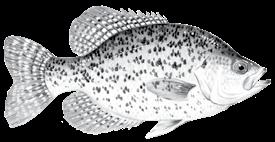
FORK: Water stained; 81 degrees; 1.94’ low. Largemouth bass are good on top-waters, frogs, shaky heads, Carolina rigs and crankbaits. Crappie are good on minnows. Catfish are fair
LAVON: Water lightly stained; 80 degrees; 3.20’ low. Largemouth bass are fair on spinner baits, crankbaits, Carolina rigs and Texas rigs. Crappie are good on jigs and minnows. White bass are good on jigs and swimbaits. Catfish are good on punch bait, liver and fresh chunks of shad.
LBJ: Water stained; 83 degrees; 0.21’ low. Largemouth bass are slow. Crappie are good on minnows. Catfish are good on punch bait.
LEWISVILLE: Water stained; 80 degrees; 1.83’ low. Largemouth bass are
slow. White bass are fair on slabs, jigs and live bait. Hybrid stripers are fair on jigs and live bait. Catfish are fair on cut shad.
LIMESTONE: Water lightly stained; 81 degrees; 2.17’ low. Largemouth bass are fair on soft plastics. Crappie are good on minnows and jigs. White bass are good on bladed baits.
LIVINGSTON: Water lightly stained; 89 degrees; 0.95’ low. White bass are good on slabs.
MARTIN CREEK: Water stained; 85 degrees; 1.80’ low. Largemouth bass are good on top-waters, spinner baits and Texas-rigged worms. Crappie are good on minnows and jigs. Catfish are fair on nightcrawlers.
MEREDITH: Water stained; 72 degrees; 48.48’ low. Largemouth bass are good on minnows and artificials. White bass are good on jigs. Walleye are good on minnows, grubs and other artificials. Catfish are fair on nightcrawlers, minnows and frozen shad.
NACOGDOCHES: Water stained; 78 degrees; 1.55’ low. Largemouth bass are good on Carolina rigs, drop shots and crankbaits. Crappie are fair on jigs. Catfish are slow.
PALESTINE: Water lightly stained; 87 degrees; 1.17’ low. Largemouth bass are slow. White bass and hybrid stripers are good on live minnows, trolled spoons and slabs. Catfish are good on live minnows and shrimp.
POSSUM KINGDOM: Water stained; 80 degrees; 1.79’ low. Largemouth bass are fair on crankbaits, Carolina rigs and drop shots. Stripers are fair on live bait. White bass are slow. Catfish are good on cut shad and stink bait.
PROCTOR: Water stained; 85 degrees; 0.99’ high. Catfish are good on jugs.
RAVEN: Water lightly stained; 85 degrees. Largemouth bass are fair on soft plastics. Catfish are fair on worms. Bluegill are excellent at the boathouse dock on crappie bites and worms.
RAY HUBBARD: Water lightly stained; 79 degrees; 2.35’ low. White bass are fair on tail spinners, top-waters and slabs. Crappie are fair on minnows. Catfish are fair on cut shad.

RAY ROBERTS: Water lightly stained; 83 degrees; 0.82’ low. Crappie are good on minnows. White bass are slow.
NACONICHE: Water lightly stained; 78 degrees; full pool. Largemouth bass are fair on square-billed crankbaits and Texas-rigged worms. Crappie are good on jigs. Catfish are fair on cut bait and live minnows.
NASWORTHY: Water lightly stained; 87 degrees. 0.46’ low. Largemouth bass are fair on chatter baits, spinner baits and soft plastics. Crappie are good on jigs. Catfish are fair on cut bait and stink bait.
NAVARRO MILLS: Water lightly stained; 83 degrees; 0.59’ low. Largemouth bass are fair on crawfish jigs. White bass are good on slabs. Crappie are good on minnows. Catfish are good on punch bait and shad.
O H IVIE: Water lightly stained; 77 degrees; 26.17’ low. Largemouth bass are slow. Crappie are fair on minnows and jigs. White bass are fair on jigs. Catfish are fair on stink bait and cut shad.
OAK CREEK: Water lightly stained; 80 degrees; 17.33’ low. Largemouth bass are good on swimbaits. Crappie are good on jigs. Catfish are good on jugs.
RICHLAND CHAMBERS: Water stained; 80 degrees; 1.35’ low. White bass are fair on slabs and spinners. Hybrid stripers are slow. Catfish are good on punch bait.
SAM RAYBURN: Water lightly stained; 80 degrees; 1.24’ low. Largemouth bass are good on top-waters and Texas rigs. Crappie are fair on minnows. Catfish are fair on cut bait and minnows.
SOMERVILLE: Water stained; 88 degrees; 1.37’ low. Crappie are slow. White bass are slow. Hybrids are slow. Catfish are fair on cut shad and punch bait.
SPENCE: Water stained; 85 degrees; 45.34’ low. Largemouth bass are good on creature baits. Catfish are good on shrimp and chicken liver.
STILLHOUSE: Water stained; 82 degrees; 0.07’ high. Largemouth bass are good on top-waters and swimbaits. White bass are good on top-waters and jigs.
Page 23
TEXANA: Water stained; 80 degrees; 2.14’ low. Largemouth bass are fair on soft plastics. Catfish are good on cut bait and live bait.
TEXOMA: Water stained; 75 degrees; 1.74’ low. Largemouth bass are fair on crankbaits and Alabama rigs. Striper are good on live shad. Crappie are slow. Catfish are good on prepared baits.
TOLEDO BEND: Water stained; 85 degrees; 4.20’ low. Largemouth bass are good on top-waters, Texas rigs, crankbaits and Carolina rigs. Crappie are slow.
TRAVIS: Water lightly stained; 80 degrees; 41.27’ low. Largemouth bass are good on Texas-rigged creature baits, worms and flukes.
TYLER: Water stained; 84 degrees; 1.04’ low. Largemouth bass are fair on top-waters, crankbaits and spinner baits. Crappie are good on minnows. Catfish are good on stink bait, liver and nightcrawlers.
WACO: Water stained; 80 degrees; 1.05’ low. Largemouth bass are slow. Crappie are good on minnows and jigs. Hybrids are fair on swimbaits and spoons. Catfish are good on cut bait and live shad.
WALTER E LONG: Water stained; 80 degrees. Largemouth bass are fair on worms, frogs and top-waters. Crappie are good jigs and minnows.
WHITNEY: Water lightly stained; 80 degrees; 0.31’ low. Largemouth bass are slow. Striped bass are slow. Crappie are fair on jigs and minnows. White bass are slow. Catfish are good on punch bait.
WORTH: Water stained; 76 degrees; 2.72’ low. White bass are good on slabs with teaser flies. Crappie are fair on jigs. Catfish are good on cut bait and punch bait.
TAWAKONI: Water lightly stained; 82 degrees; 1.72’ low. Largemouth bass are good square-billed crankbaits. Hybrid stripers and white bass are good on slabs and inline spinners. Crappie are good on minnows. Catfish are good on punch bait and dip bait.
WRIGHT PATMAN: Water stained; 83 degrees; 3.89’ high. Crappie are good on minnows and jigs. Catfish are good on stink bait.

By Vivian Leopold For Lone Star outdoor newS
An early over-the-slot catch on the first day of the Berkley Big Bass Tournament awarded John McDiffitt, of Quitman, the win and a Skeeter boat with ZX200 Yamaha SHO and Skeeter trailer. The tournament was held October 19-20 at Lake Fork with more than 1,200 amateur anglers vying for 20 hourly payouts and prizes. Only three fish over the 24-inch slot were caught.
Please turn to page 12

who were trying to catch redfish. Very high tides and stiff winds resulted in even the best guides struggling to get the redfish to bite.
For the second year in a row, the team of David Sams and his daughter, Mimi Meyer, won the event, but not with a huge stringer. Blind casting most the day, team Sams Club hooked two 11inch fish early, and then followed with a 23-inch redfish to top the field.
One 26-inch red was caught by Jeff Baker, but was the team’s only fish of the day.
Other prize winners included Charlie Junell, an 8th-grader, who won a TFO rod for the best team name, Pier Pressure.

Dean Meyer won a Sawgrass Rod for best photo.
Sponsors of the event were Lone Star Outdoor News, TFO, Sawgrass Rods and Black Duck Skiffs.



The Coast Guard medevaced a 36-year-old female from the Galveston Jetty after receiving a request from Galveston Emergency Medical Services. The woman had injured her leg on the jetty. A helicopter air crew arrived on scene, hoisted the passenger and transported her to the University of Texas Medical Branch in Galveston in stable condition.
On Oct. 5, Texas game wardens responded to the vicinity of Rikki Dr and FM 3240 in Bandera County following reports of several deceased deer carcasses found at the entrances of various properties. Upon arrival, wardens noticed that a few of the deer carcasses had broken legs and road rash, indicating they had been struck by a vehicle. A total of seven deer were located deceased. Call Operation Game Thief with any information.

bird hunting in Texas. Dove and duck hunting usually occurred in locations more accessible by game wardens in agricultural fields, near urban areas, along with public waters, National Wildlife Refuges, and Wildlife Management Areas.
Continued from page 11
The tournament required that Berkley baits be used exclusively. McDiffitt caught his 8.18-pounder with a Chigger Craw, his favorite bait, in 5 feet of water.
From 2010 to 2018, McDiffitt lived in Bahrain, returning home for two weeks each year. Whenever possible, he timed that two-week vacation to be able to compete in this tournament.
Harris County Game Warden Mack Chambers was selected as the CCA Officer of the Year. He received the honor at the Houston Homebuilding Chapter Banquet in Houston. As a 19-year warden, Chambers led the way in coastal conservation law enforcement.
TEN
During the 88th Legislature, Rider 43 of HB 1 required Texas
Parks and Wildlife Department to conduct a review of illegal game bird hunting and historical violation levels. The Law Enforcement database contained 34,225 species-specific game bird hunting violations between the 2013-14 and 2022-23 hunting seasons. Over the last decade, violations declined, but notably correspond to a decline in overall game bird hunters in Texas. Dove hunters declined substantially from approximately 412,000 to 234,000 from 2013-14 to 2022-23 hunting seasons, respectively, based on TPWD’s Small Game Harvest Survey.
Overall, ducks and dove accounted for 29 percent and 62
percent of the violations, respectively. No other species-specific game bird hunting comprised more than 3 percent of the total violations. Six of the top 10 violations overlapped between ducks and dove which included the following, in no order: daily bag limit, unplugged shotgun, State Migratory Game Bird Stamp violation, no Harvest Information Program certification, after legal shooting hours, possess in a closed season, and no valid license. Additionally, long-standing waterfowl and dove hunting rules, including prohibitions of baiting and use of unplugged shotguns, were common violations in migratory game
Generally, violations for upland game bird hunters were lower than migratory game bird hunting, with population size, hunter numbers and distribution, and the complexity of regulations between the categories likely explaining these differences.
Hunting without consent for sandhill crane increased with the popularity of sandhill crane hunting, especially in West Texas.

A mere 0.01 pounds gave Randy Young of Hope, Arkansas, the heaviest bass under the 16-inch slot at 2.79 pounds, squeaking past the catch of Timothy Price, of Tyler, at 2.78 pounds. Young caught the bass on a June bug bait that came in each angler’s registration bag. He went home a happy man with a $46,000 Skeeter ZX150 Yamaha SHO and Skeeter trailer.
In the Ladies’ Division, 2.54 pounds was enough to give Stacy Crumpler, of Bloomberg, first place. Oddly enough, Crumpler’s husband, Stephen, later weighed in at the same 11 a.m. hour the first day, a bass of exactly the same weight. Grace Pratt, of Northlake, won the Junior Division with her 1.99-pound bass. This was her fourth year fishing in a tournament.



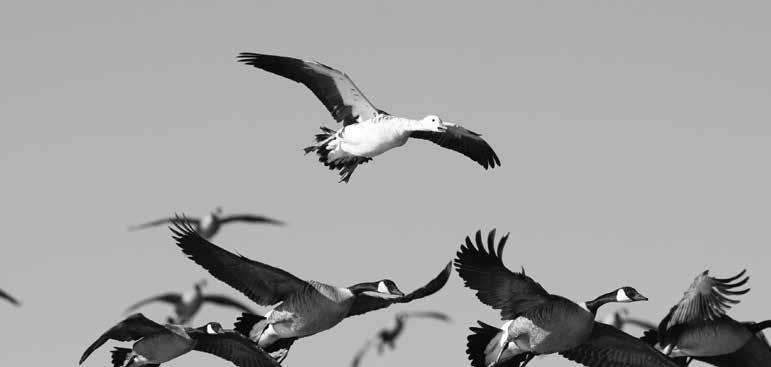
juvenile birds in the flocks. With the duck season just around the corner, habitat conditions look promising for both ducks and hunters in many parts of Texas.”
Considerable amounts of habitat have recovered from last year’s extreme drought and will provide an abundance of fresh water this fall. This should attract ducks heading to Texas and create better habitat conditions for hunters this season compared to previous years.
However, an unusually warm early fall across the Central Flyway has delayed migration. Hunters in the Dakotas said very few ducks or geese have arrived in the states as of Oct. 17, with the exception of some early migrating white-fronted geese, with no big cold fronts in sight.
“While things can change rapidly, we remain optimistic that this warm weather pattern will shift, bringing timely cold fronts and significant rain events,” Kraai said. “I expect an above-average duck season, though it may start slowly due to the late migration of larger duck species still lingering up north.”
Although the snow goose migration has shifted east to Arkansas and eastern Missouri and Tennessee, hunters in Canada are reporting large populations of juvenile birds.
Texas guide and former Texas State Duck Calling Champion Ward McKee said the harvest of juvenile birds has been as high as 60 percent of the total. McKee reported a 200-bird hunt in Saskatchewan, with most birds being the easier-to-decoy juveniles.
The special youth-only duck season along with veterans and active-duty military season occurs Oct. 19-20 in the High Plains Mallard Management Unit, followed by youth-only/ active-duty military duck season Oct. 26-27 in the South Zone and Nov. 2-3 in the North Zone. Regular duck season in the High Plains Mallard Management Unit opens Oct. 26, Nov. 2 in the South Zone and Nov. 9 the North Zone.
Light and dark goose season starts Nov. 2 in the East Zone and West Zone.




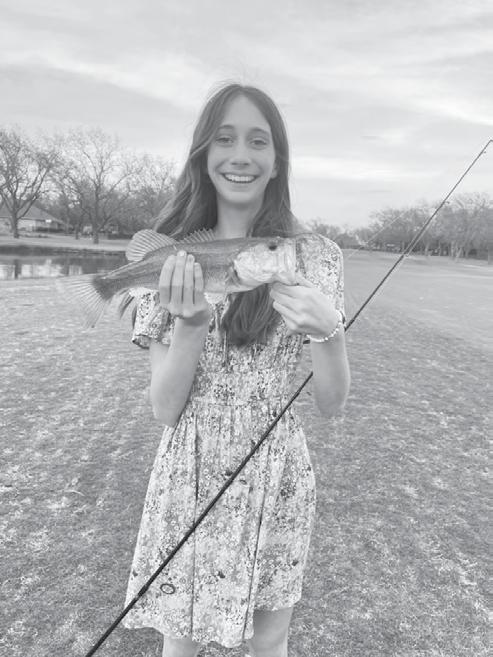







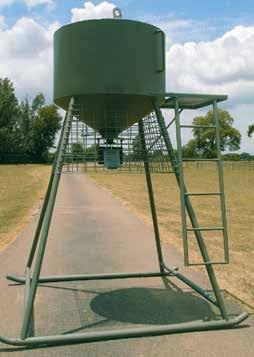
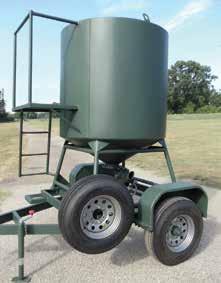





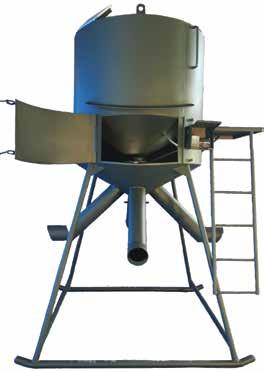

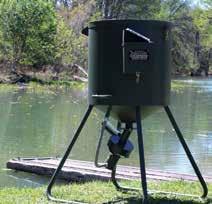









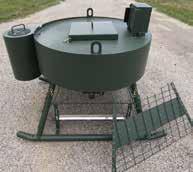






Continued from page 8
Despite the low water levels, Taylor has been finding large numbers of crappie and white bass stacked up and feeding aggressively. For crappie, he’s been using forwardfacing sonar to locate concentrations of the species in brush piles and around timber.
“The action on jigs has been pretty steady, especially as water temperatures have started to cool off,” he said. “The key has been using subtle shakes and twitches to entice the crappie to strike. I’ve had the most success targeting areas with multiple brush piles close together. This allows me to bounce from one pile to another quickly, catching the most aggressive fish, without spooking or putting too much pressure on the rest of the school.”
As the water level has continued to drop on Choke, the shallower brush piles have become harder to approach.
“The crappie holding in shallower brush piles will spook from the boat easier or will behave more finicky in general.” Taylor explained. “Sometimes the only way to get
Continued from page 9
utility Corpus Christi Water plan to build the plant at a site beside the Inner Harbor ship channel, which links the Port of Corpus Christi to the Gulf of Mexico. The plant would both draw from and discharge into the channel.
Kiewit Corp. has past experience with design and construction of desalination plants in California and Texas.
City officials say they anticipate issuing a notice to proceed in December for work to start next year and complete in late 2027.
In July, the Texas Water Development Board approved the city’s application seeking $535.1 million for the project through the state’s State Water Implementation Fund for Texas program.
Corpus Christi Water, which supplies about 500,000 people, said the desalination plant is needed to help secure the local water supply against drought. Opponents said the water will be used for industry, not people, and the impact of discharged brine into the channel will negatively impact marine species.
Dean Thomas, who operates Slowride Guide Services in Aransas Pass, opposes the plant and made his feelings known, saying he’s glad he is in the twilight of his career.
“This thing will suck up hundreds of millions of gallons of water per day to create 30 million gallons of freshwater per day, which will be created for industrial use. It’s not for the people to drink.”
Thomas said he has seen the changes on Redfish Bay and the “future looks bleak with the type of industry that is growing on our shoreline. It is time for the next generation to decide if they want to save it for future generations to enjoy as we do or continue watching the slow death that is occurring.”
these fish to eat is to use live minnows.”
Most of the crappie have been from 10-12 inches with some 13-14-inch fish mixed in.
Taylor also has been finding schools of white bass roaming around main lake humps in 10-20 feet of water.
“The easiest schools of white bass to chase are the ones that are hanging tight to the bottom in depths of 15-20 feet,” he said. “If you can get over the top of them with a jigging spoon, you can catch a bunch of them in a hurry.”
According to Dusty McDonald, Inland Fisheries Corpus Christi district supervisor, the department is actively pursuing ways to install and create a low-water boat ramp for the public while Choke Canyon Reservoir is at a historic low level.
“The nice thing about the Calliham Unit boat ramp, is that there is a lot of rock in that area, which could allow us to continue to extend that boat ramp further into the water,” McDonald said. “There’s more potential
to create launching access for boaters and anglers as the water continues to drop than meets the eye. We just have to figure out ex actly what that looks like.”
From a biological standpoint, McDonald said if Choke Canyon were able to begin to fill back up and it’s water level rises, the fish ery as a whole would only flourish and im prove.
“There’s been less pressure on the lake with the low water level, and many areas that have historically been underwater are now high and dry and have developed a ton of new vegetation growth,” he said. “If these areas were to flood once again, the amount of habitat that would be available for both baitfish and gamefish would be incredible. Just because this lake is at an all-time low does not mean the fishery is at its end.”
McDonald said his department and part ners also are investigating solutions to im plement during extreme drought scenarios for Choke Canyon and its watershed.
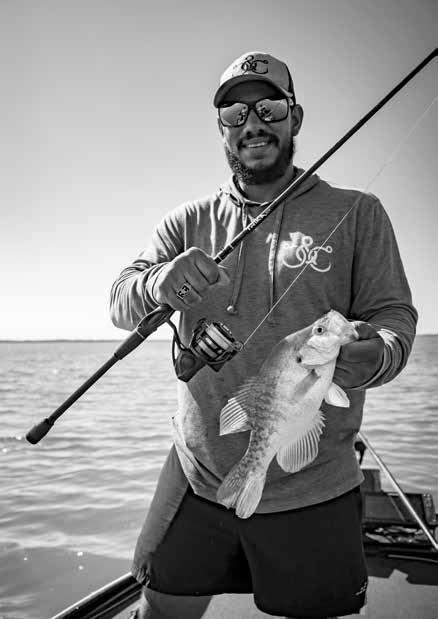

Silencer Central hired Joe Kurtenbach as senior manager of media and relationships.
Vista Outdoor Inc. entered into an agreement with funds managed by Strategic Value Partners, LLC, to sell Revelyst in an all-cash transaction based on an enterprise value of $1.125 billion. Vista Outdoor also entered into an amendment to the merger agreement with Czechoslovak Group to acquire The Kinetic Group.
Retay USA retained Ferguson-Keller Associates Ferguson-Keller Associates to represent the company in Michigan, Indiana and Ohio and Gen 3 Outdoors to cover 11 eastern states.
Anderson Manufacturing promoted Jeremy Hammons to vice president of sales and marketing.
SIG unveiled the 210,000 square-foot expansion of its ammunition business at the Jacksonville Arkansas Ammunition Center. Leeth named director
Megabass of America, the North American arm of the Japanese tackle manufacturer, named Patterson Leeth as director of marketing.
Retailer Orvis announced it will lay off 8 percent of its workforce, close a number of retail stores and discontinue its catalog.
ACROSS
4) One of the cats
5) Johnson County’s seat
6) The sly predator
7) A winter deer favorite
10) Coastal bay
11) The roadrunner’s nemesis
14) Shotshell brand
15) Turkey call type
17) Shotgun brand
18) An African antelope
20) East Texas lake
21) Good bass lure
23) Young County’s seat
25) Group of puppies
27) Falfurrias’ county
29) Mule deer hunters’ org.
30) They make the honey
31) Jefferson’s county
33) Bellville’s county
35) Sinker type
36) Hunting boot brand
39) Trout species
40) North American wild sheep
41) A Great Lake
42) Hill Country lake

2 lbs. alligator, cut into 1-inch cubes
1 tbsp. canola oil
2 tbsps. garlic, minced
1 cup onions, small dice
3/4 cup green bell peppers, diced
1/2 cup celery, diced
1/2 cup white wine
3 cups chicken stock
24-oz. can diced tomatoes
1 cup potatoes, diced
1 tbsp. dried thyme
1 tbsp. dried oregano
1 bay leaf
1/8 tsp. cayenne
2 tsps. Tabasco
1 tsp. Worcestershire sauce
1/4 lb. butter
1 cup green onions, chopped
1 baguette, sliced and toasted
Salt and pepper
DOWN
1) Top-water lure, whopper ____
2) Callhan County’s seat
3) The male whitetail
4) Border lake
5) The king salmon
6) Goose species, white ____
8) Fishing line brand
9) Hill Country lake
11) Itchy bugs in the grass
12) Green, blue or cinnamon
13) Rilfe brand
16) Material used in jigs
19) Safari destination
22) Good white bass lure
24) Kayak brand
26) South Texas lake
27) The tree-eating furbearer
28) Crankbait type, ___ billed
31) A duck favorite
32) Bass hiding spots
34) Worm rigging style, ___ head
37) Ammo brand
38) Waxahachie’s county
39) Shot size for goose hunters

Heat canola oil in 8-quart stock pot over medium-high heat. Add garlic, onions, green peppers and celery. Cook for 6-8 minutes, until onions are translucent and vegetables are tender. Add white wine, chicken stock, tomatoes, thyme, oregano, bay leaf, cayenne, Tabasco and Worcestershire. Season to taste with salt and pepper. Bring to simmer and cook for 5 minutes. Add alligator cubes to stew. Cover and simmer for 45 minutes. Add butter and green onions to stew and stir until butter melts. Remove bay leaf. Serve with sliced, toasted baguette.
—Louisiana DFW
3 pounds hybrid fillets
1 tbsp. fennel seeds
1/2 tsp. salt
1/2 tsp. ground black pepper
1/4 cup olive oil
1 tbsp. brandy
Crush fennel seeds with mortar and pestle or other method. Combine with salt, pepper, oil and brandy and mix. Place fillets on greased broiler pan. Brush well with fennel mixture. Broil about 4 inches from heat until fish flakes easily with a fork, about 10 minutes.
—NC Sea Grant








Dante Piraino, of Baldwinsville, smashed the existing record for smallmouth bass by 8 ounces when he reeled in a 9-lb. 0-oz. smallmouth from the St. Lawrence River while fishing in a bass tournament on Sept. 22. The massive smallie was caught in 30 feet of water on a soft plastic minnow imitation. The fish was released after the official weigh-in. —NYDEC
Christopher J. Alexander, 28, of Wilmington, pleaded guilty to 14 counts in the illegal taking of an 18-point trophy white-tailed buck deer in Clinton County on Nov. 9, 2023. Alexander pleaded guilty to taking a second antlered buck during the 2023 hunting season, which is another violation of Ohio law.
The 14 counts include the illegal taking or possession of deer, hunting without a license, spotlighting, hunting without permission, tampering with evidence and falsification.
Maximum sanctions could include $13,750 in fines, community control, a 5-year hunting license suspension and restitution for both bucks. The larger buck’s antlers have 18 scorable points, and the final restitution has been calculated at $35,071. The final restitution for the second buck, with eight scorable points, is $4,625.
Three accomplices also pleaded guilty in connection with the case.
—ODNR
Ryan Young, of Buffalo, set the state record for black buffalo with a 55-pound, 9-ounce fish caught with a rod and reel on Stockton Lake Oct. 13. The previous state record was a 53-pound black buffalo caught from Wappapello Lake in 1989.
Young was crappie fishing with guide Kris Nelson and was catching everything except crappie.
It took about 30 minutes and three men to get the buffalo into the boat. The group contacted their local conservation agent suspecting it could be a state record.
On Oct. 16, a fall-run Chinook salmon was identified by Oregon Department of Fish and Wildlife’s biologists in a tributary to the Klamath River above the former J.C. Boyle Dam, becoming the first anadromous fish to return to the Klamath Basin in Oregon since 1912 when the first of four hydroelectric dams was constructed, blocking migration.
The salmon and others likely traveled about 230 miles from the Pacific Ocean to reach the tributary only months after four Klamath River dams were removed to ensure fish passage from California to Oregon.
“This is an exciting and historic development in the Klamath Basin that demonstrates the resiliency of salmon and steelhead,” said ODFW Director Debbie Colbert.


Continued from page 1

time I made up my mind that he was the deer I wanted to shoot, he walked off.” Hortenstine went back out the next afternoon, and saw a lot of deer, but not his target buck. But just as the sun was going down, the buck finally walked out from the opposite direction where it had left the evening before.
After watching him in his sights for what seemed like forever, the buck finally gave Hortenstine a shot opportunity. He squeezed the trigger, and the buck ran 40 yards and fell.
“We first noticed this buck about four seasons ago,” Hortenstine said. “He’s always had a kicker on his right G2 and he’s always had real distinguishable browtines that curve in toward each other. The deer has always been a main frame 8 point, and this year was the first year he threw an extra crab claw on the end of his left main beam.”
Hortenstine had opted to let the buck walk last season as a 6 year old in the 140- inch range, and it paid off.






Continued from page 4
one section one day and miles away the next,” Tinker said.
Some of the eight hunters brought their own dogs, while others hunted with Tinker and his setters. Miles of walking later, most were able to take a few chickens, along with some pheasants, which were legal to take before the South Dakota opener on tribal lands with a permit.
Unseasonably warm temperatures, which reached near 90 degrees one afternoon, halted some of the hunts early to protect the dogs, although the humans were also pretty worn out.
The birds often flushed well away from the hunters, even if the dogs were on point.
“Take the long shot,” Tinker advised. “It only takes a pellet or two to bring one down, and they don’t run after they are hit like a pheasant. The dogs will find them.”
On the last hunt, Tinker did just that, bringing down a few at distances most would just hold their gun and watch.
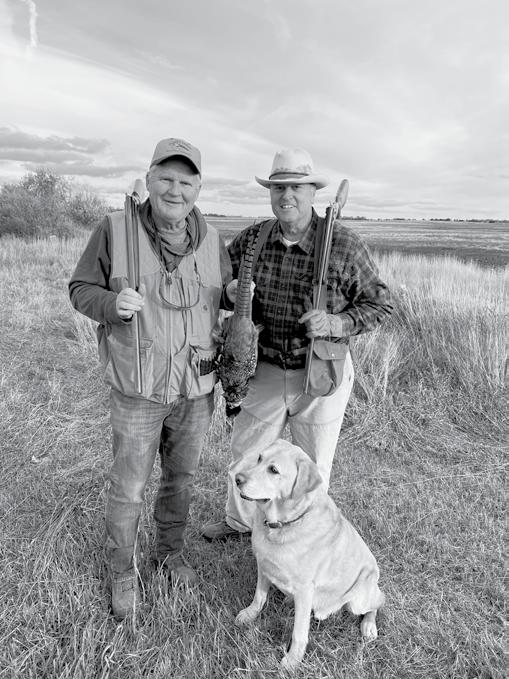
There were a few other surprises. Seeing and hearing an expansive prairie dog town at a close distance was impressive, and one prairie rattlesnake was almost stepped on by a dog before being dispatched.
A prairie chicken hunt, although there was plenty of action and birds seen, is not a hunt for those who just want to fill the freezer. You can walk for hours without shouldering your shotgun. On the first day, a few hours of a walk through the long grass turned into a flurry of about 30 birds popping up far ahead — some in range. On the last hunt, Sams, Tinker and Nyhus each saw good numbers of prairie chickens and a few pheasants, and plenty of shots were made.
The group of hunters, some of whom knew each other from decades before, quickly jelled into a cohesive team.
A Norwegian hunter and fellow photographer, Mitch Kezar, shared Ole and Lena jokes. Tinker and Nyhus shared stories of the track and football coach at the college, the legendary Rollie Greeno, who was definitely old-school and probably wouldn’t last long coaching today’s players. Hunting stories, mostly true, permeated the oversized garage-turned man cave.
Tinker shared the experiences that led him to sell the horse operation, including being kicked in the face by a horse and being rolled over by a tractor, both resulting in extensive hospital stays and quite a few pins, plates and screws holding him together.


The group will hunt together again. Invitations for more hunting and fishing trips were shared, and each planned a return to Pierre next year.
The entire group left grateful for the unique experience.
After the hunters headed home, Nyhus and Sams drove farther north to Nyhus’ hometown of Harvey, North Dakota, for a few days of pheasant hunting, as the season had opened in the state. On the way, they spotted a moose in a small wetland beside the road and, of course, stopped to get photos.
Plenty of birds were seen on the family land hunts, although the roosters were surprisingly wild for just the third day of the season, and were committed to staying in the thick cattails, a difficult walk for man, woman or dog.
Continued from page 4
were starting to act like they were aware of our presence,” Meadows said. “They began walking off to our left, which ended up pulling the bull out of the brush. He was about 300 yards away and stopped briefly to look at us, and I took my shot. Immediately, we felt like the shot placement was good.”
The bull took off in the same direction the cows had moved, and ran about 60 yards before falling. Meadows said he didn’t realize the bull was as big as he was until he walked up to him.
“It was really one of those hunts where things just fell into place,” he said.


SABINE LAKE: 85 degrees. Speckled trout and redfish are good on live shrimp under a popping cork. Flounder are good on jigs rigged with 3.5-inch soft plastics.
BOLIVAR: 80 degrees. Speckled trout, redfish and black drum are good on live shrimp. Flounder are good on soft plastics and live mullet.

TRINITY BAY: 82 degrees. Redfish and black drum are good on live shrimp. Speckled trout are fair on soft plastics and live shrimp under a popping cork. Flounder are fair on live and artificial shrimp.
EAST GALVESTON BAY: 83 degrees. Redfish and flounder are fair on live shrimp, live mullet and soft plastics. Speckled trout are good on live shrimp under a popping cork.
GALVESTON BAY: 81 degrees. Black drum and redfish are fair on live shrimp.
WEST GALVESTON BAY: 84 degrees. Speckled trout and redfish are fair on live shrimp and soft plastics. Black drum and sheepshead are fair on live shrimp.
TEXAS CITY: 82 degrees. Bull redfish and black drum are fair on cut bait and cracked crab. Speckled trout and redfish are fair on live shrimp and finger mullet. Flounder are fair on live mullet.
FREEPORT: 85 degrees. Speckled trout, redfish and black drum are good on live shrimp under a popping cork.
EAST MATAGORDA BAY: 86 degrees. Redfish are fair on live shrimp and shrimpimitation soft plastics. Speckled trout are good on live bait and soft plastics. Black drum are good on shrimp.


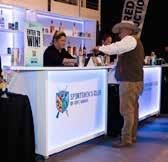

WEST MATAGORDA BAY: 86 degrees. Speckled trout are fair on live shrimp and soft plastics. Black drum are fair on shrimp under a popping cork. Redfish are slow.
PORT O’CONNOR: 85 degrees. Bull redfish are fair on blue crab and Spanish sardines. Slot redfish are fair on live shrimp and cut bait. Speckled trout are fair on live shrimp and soft plastics. Black drum are fair on live shrimp.
SAN ANTONIO BAY: 86 degrees. Redfish are fair on shrimp. Speckled trout are slow.
ROCKPORT: 84 degrees. Speckled trout are fair on piggies. Redfish are good on shrimp, piggy perch, cut skipjack and mullet. Black drum are fair on live or dead shrimp.
REDFISH BAY: 83 degrees. Redfish are fair on piggy perch. Speckled trout are slow.
PORT ARANSAS: 84 degrees. Redfish are good on shrimp and cut mullet. Speckled trout are good on shrimp. Black drum are good on shrimp.
CORPUS CHRISTI: 83 degrees. Speckled trout are fair on piggy perch. Black drum are fair on shrimp. Redfish are good on live mullet or dead shrimp.

BAFFIN BAY: 84 degrees. Speckled trout are fair on top-waters, soft plastics and slowsinking twitch baits. Redfish are fair on soft plastics and top-waters.
PORT MANSFIELD: 85 degrees. Speckled trout and redfish are fair on top-waters and soft plastics.
SOUTH PADRE: 86 degrees. Speckled trout and redfish are good on live shrimp under a popping cork. Mangrove snapper are good on free-lined live shrimp.
—TPWD




OCTOBER 28
DUCKS UNLIMITED
NETC Dinner
Stonehouse, Colleyville (202) 361-7674 ducks.org
NOVEMBER 6
QUAIL COALITION
San Antonio QC Banquet
Aggie Park (214) 534-4122 quailcoalition.org
NOVEMBER 7
DUCKS UNLIMITED Frisco Dinner Verona Villa (903) 235-8553 ducks.org
DALLAS SAFARI CLUB
Speaker Series Lakewood Country Club (972) 980-9800 biggame.org
NOVEMBER 9-10
TEXAS GUN & KNIFE SHOWS
Kerrville Expo Hall (830) 285-0575 texasgunandknifeshows.com
NOVEMBER 12
DELTA WATERFOWL
Mount Pleasant Dinner
Mount Pleasant Rodeo Pavilion (903) 380-0842 deltawaterfowl.org


NOVEMBER 13
DELTA WATERFOWL
Houston Banquet Lodge 88 (713) 591-1771 deltawaterfowl.org
NOVEMBER 14
DUCKS UNLIMITED
Corpus Christi Banquet
Richard M. Borchard Fairgrounds (361) 290-0017 ducks.org
DALLAS SAFARI CLUB
Brackish Member Event Brackish, Dallas (972) 980-9800 biggame.org
DUCKS UNLIMITED
Victoria Banquet
Victoria Community Center (830) 591-7722 ducks.org
NOVEMBER 16


Continued from page 8
will still be around.”
On Lake Conroe, guide Chris Edwards said it is still a little slow for hybrids on the lake.
“Right now, we are finding them shallower than normal early in the morning,” Edwards said. “Once the sun is up, they move out to 10-15 feet.” he added.
The fish have been staging off secondary points and cuts in the lake, and are biting best on 2- to 5-inch live shad.
“They aren’t in open water yet,” Edwards said. ‘They are still being a little picky. The smaller bait has been working better for me.”
Edwards said the hybrid fishing hits its peak around Thanksgiving on Conroe, as the fish move more to open water.
“Right now, we are more focused on catfish,” said.

ROCKY MOUNTAIN ELK FOUNDATION
Texas State Rendezvous Venatura Excursions, Hondo (832) 655-3180 rmef.org
NOVEMBER 21
DUCKS UNLIMITED Weatherford Dinner
Parker County Sheriff’s Posse (817) 597-0652 ducks.org

MOBILE SPORTING CLAYS FOR HIRE!

Fundraisers, Corporate, Parties! Sales/Service all Traps! 40+ Years Experience! (817) 999-1395
RENO EQUIPMENT/ RIO GRANDE PIPE
Our companies sell structural pipe in several sizes, from small pipe for gates, to standard sizes for fencing, on up to the larger sizes for H-braces, barn legs and even culverts. We stock pipe sizes from 1” to 20”, we even have heavy weight and thick wall pipe in several sizes for heavy duty projects. We also sell an assortment of other equipment, currently we have some surplus tanks (8400gal, steel, 12’w x 7’h), some tinhorn/culvert material (from 4’dia x 6’-10’L to 16’dia x 10’-20’L), 18’ & 20’ gooseneck tandem single trailers, and some cattle guards. Contact Josh Brown at (505)-366-3428, or Cody Hudson at (575)-441-1186.
SOUTHWEST RANCH SALES
463+/- Acres, Stilwell, OK. Like new, furnished barndominum, metal shop, metal storage building. Excellent whitetail deer, turkey, wild hog hunting. Asking $1,265,000. MOTIVATED! SWRANCHSALES.COM (972) 542-8511 DUVAL COUNTY South Texas Dove Hunting 200 acres, Lodging (RV Power Available) Huntershilton.com For more info (361) 244-0544 or (361) 443-9330
Stacey Greb: (580) 678-0662 United Country Heard Auction & Real Estate



CHESAPEAKE BAY
RETRIEVER PUPPIES New litter.
Champion Bloodlines Best Hunting Dog for Duck & Geese All Health Clearances. Located in Texas. (281) 352-9294

Continued from page 5
which runs from Highway 186 to a road called GI or Lila Road.
From time to time, the two roads are inaccessible when ever several inches of rain fall in the area. The roads get so muddy and bumpy to the point of making it treacher ous even for high profile ve hicles to get through.
But early this month, the U.S. Fish & Wildlife Service began a road improvement project to fix the roads. Trucks loads of caliche were poured over the roads to al leviate the problem, a USFWS worker said.
One of the reasons why the roads have been neglected is because of confusion over who has been in charge of the roadways that dissect the refuge in three places.
USFWS had thought they belonged to Willacy County, whereas county officials believed they belonged to the other party.
The issue has been resolved.
El Teniente is one of four tracts under the LRGVNWR. The others are La Sal del Rey, Schaleben and Big Lake. Hunting at all four tracts change from one place to another through a drawing system.
Some tracts have six hunting periods during the regular deer season, others four. Five of the six hunts are for archery only, and using slugs and muzzleloaders are only permitted at the Big Lake tract and for exotic animals.
El Teniente has become a popular tract for nilgai and wild hog hunting and the refuge offers two types of hunts. One is for archery, with two separate hunts each month in No vember, December and January.
Hunters are allowed to harvest two white-tailed deer but one buck only and unlimited exotics like nilgai and hogs.

For the exotic hunts, 4,640 people applied for 60 spots available for the four hunts held in January and February. Hunters can harvest unlimited nilgai antelope and feral hogs at these hunts.
El Teniente has no station where hunters can go and check in an animal, so each hunter has the responsibility to tag each animal he or she has harvested.





